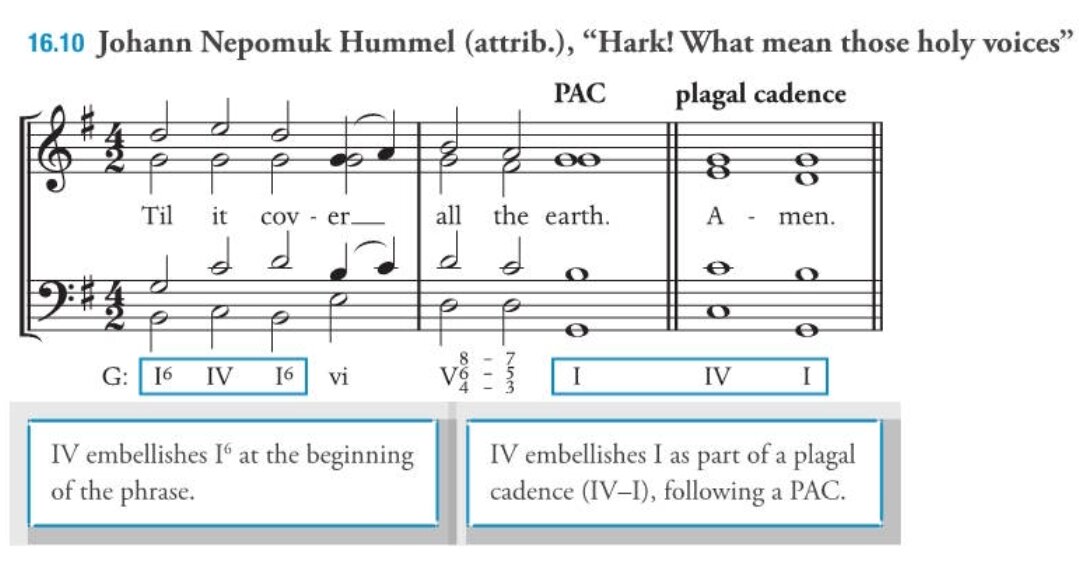Approaching dominant: $\text{IV}$, $\text{ii}^6$, $\text{ii}_5^6$
- in major: $\text{IV}$, $\text{ii}^6$, $\text{ii}_5^6$ (fa-la-do, fa-la-re, fa-la-do-re)
- in minor: $\text{iv}$, $\text{ii}^{\circ 6}$, $\text{ii}^{{\varnothing}_5^6}$ (re-fa-la, re-fa-si, re-fa-la-si)
- serves as subdominant
- leads to dominants such as $\text{V}/\text{V}^7/\text{vii}^{\circ 6}$


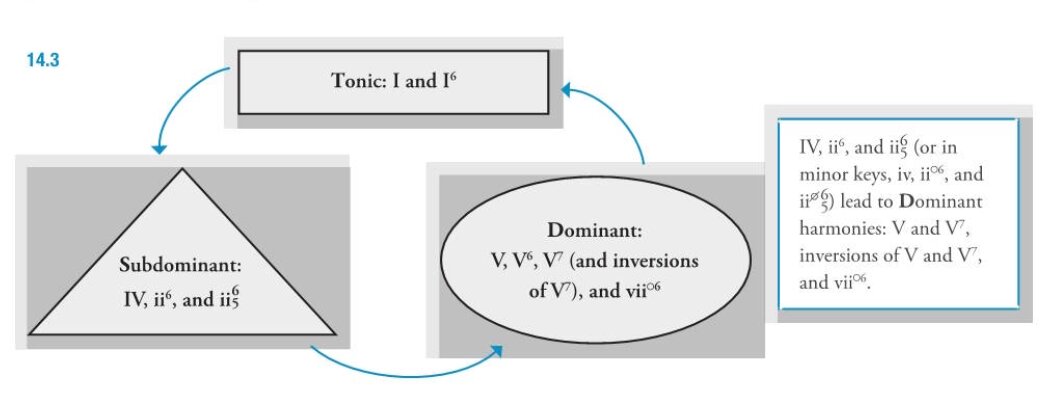
subdominants$-\text{V}$
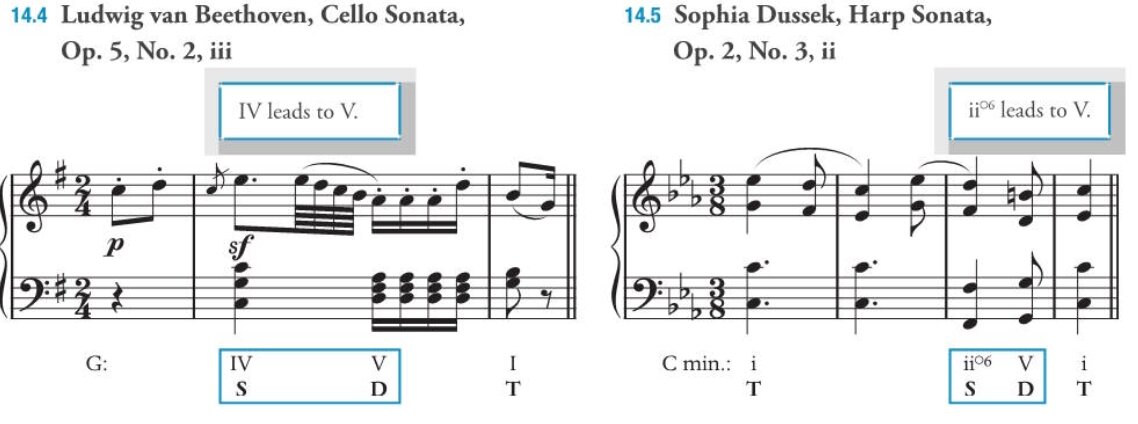
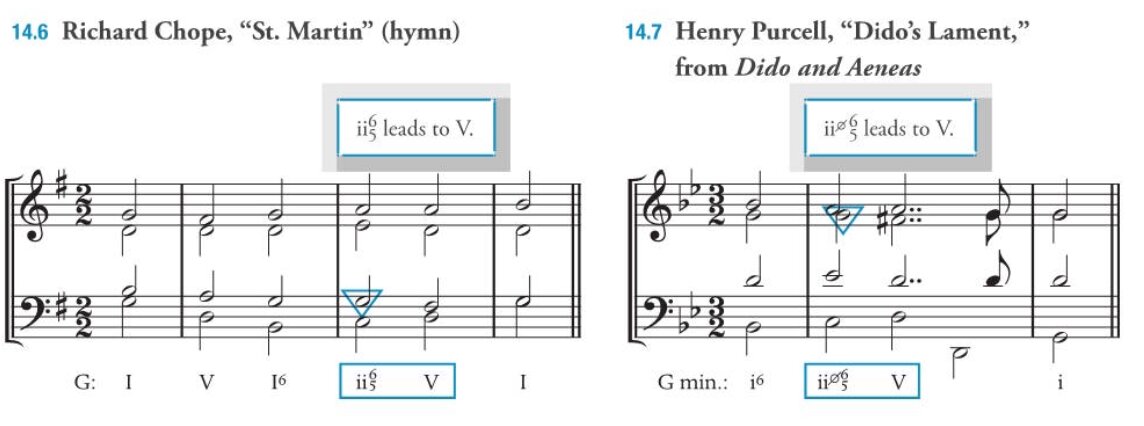
subdominants$-\text{V}^7$
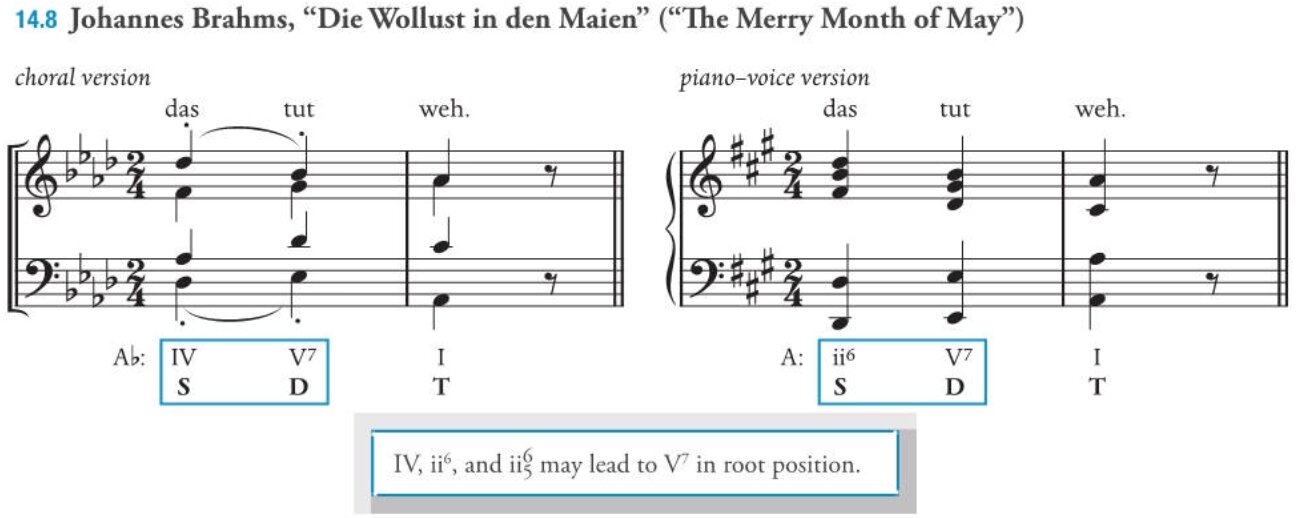
subdominants$-\text{V}_2^4/\text{V}^6/\text{vii}^{\circ 6}$ (inversions of dominants)
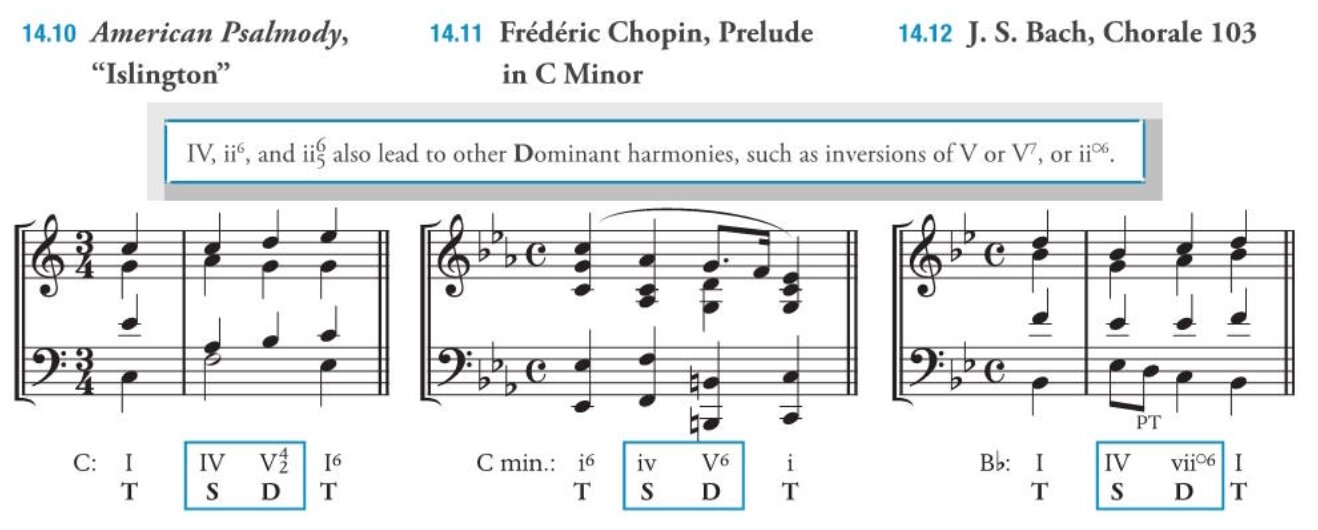
useful for cadence
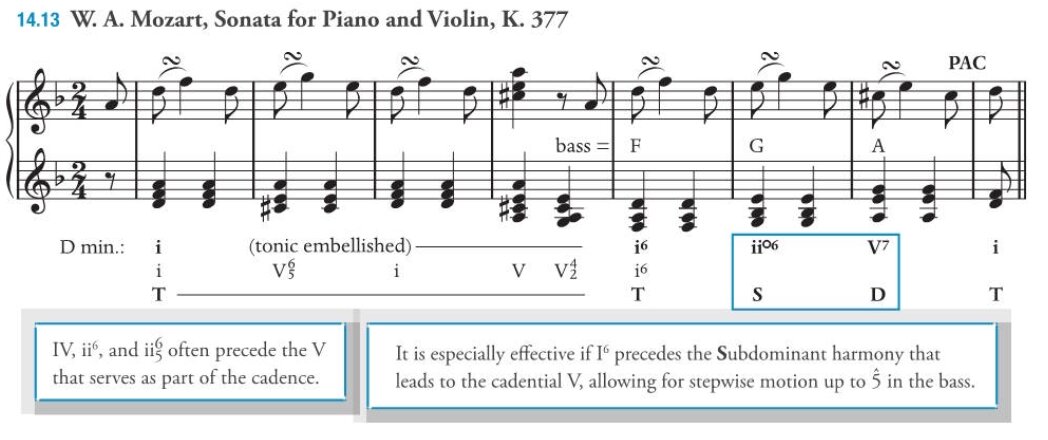
move between subdominants
- $\text{IV}-\text{ii}^6-\text{V}$: common
- $\text{ii}^6-\text{IV}-\text{V}$: uncommon
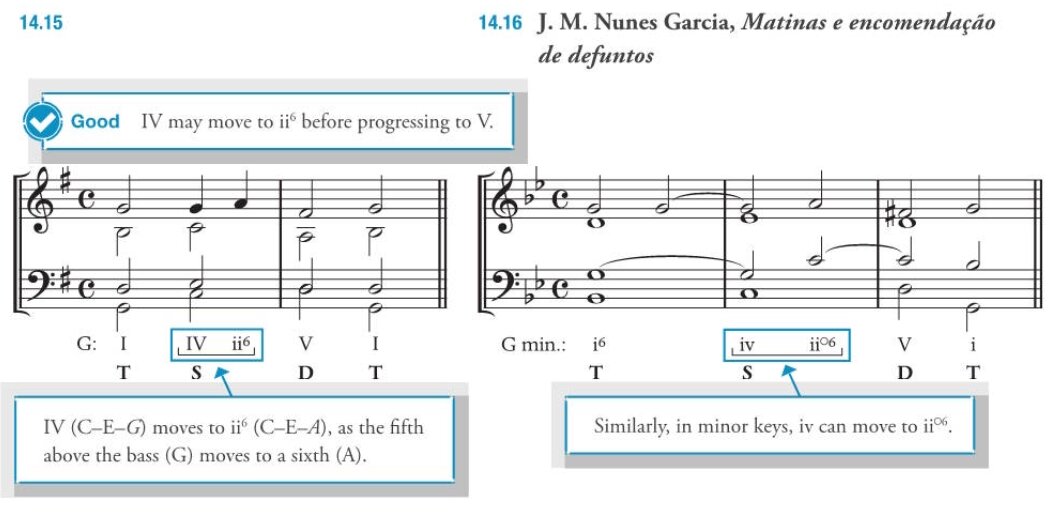
voice leading
$\text{IV}$ and $\text{ii}^6-$ dominant
- double root of $\text{IV}$
- double $\hat{2}/\hat{4}$ of $\text{ii}^6$
careful with parallel 5th/8th when moving to V

to avoid parallel motion: upper voices and bass are better in contrary motion



$\text{ii}_5^6-$dominant

$\text{iv}/\text{ii}^{\circ6}/\text{ii}^{{\varnothing}_5^6}-$dominant
- in minor, $\hat{6}$ is a tendency tone that pulls down
- $\hat{6}$ should never go up
- avoid doubling $\hat{6}$
- raise $\hat{6}$ then they become $\text{IV}$, $\text{ii}^6$, $\text{ii}_5^6$, they can move up to leading tone
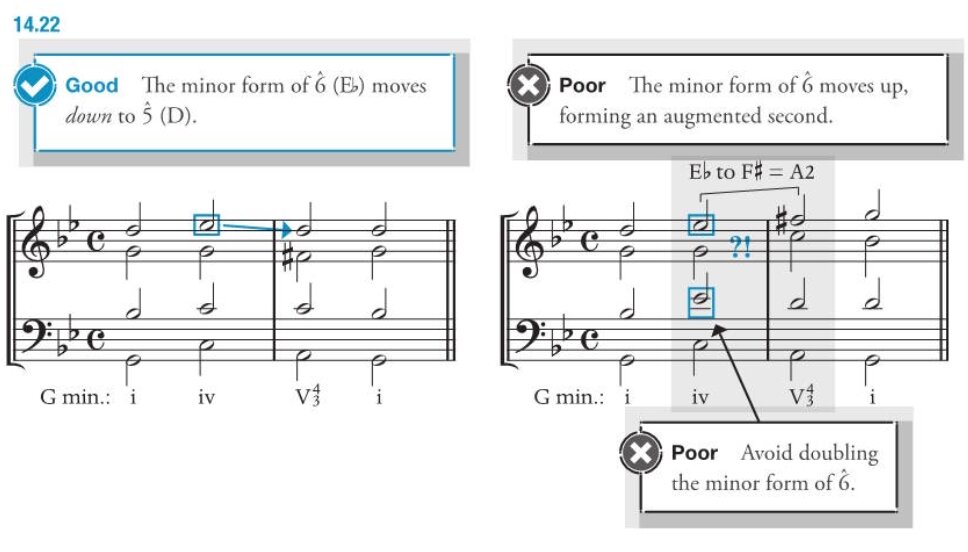
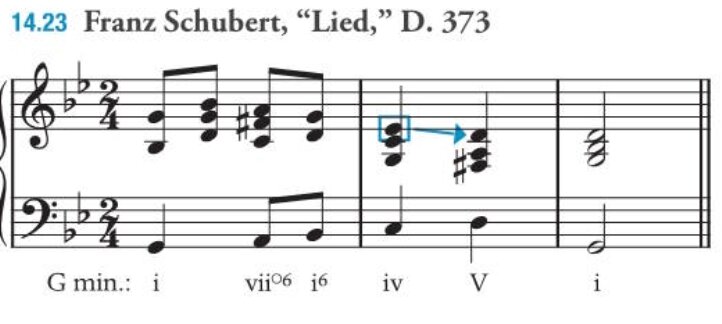
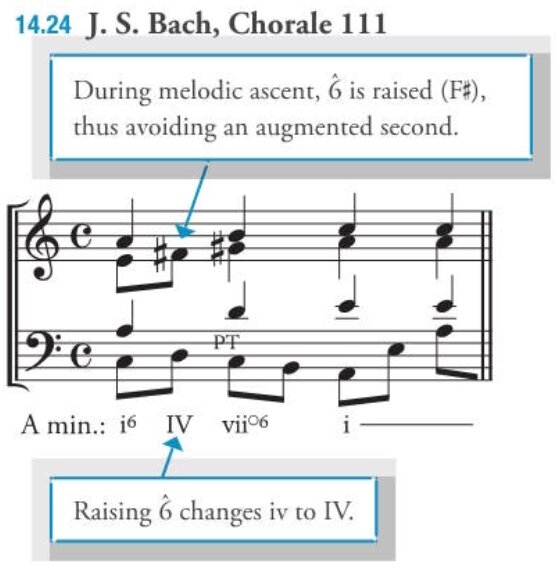
Approaching $\text{V}$: $\text{IV}^6, \text{IV}^7, \text{ii}, \text{ii}^7$
$\text{IV}^6$
- $\text{IV}^6-\text{V}/\text{V}^7$ (root position or 1st inversion)
- bass move stepwise
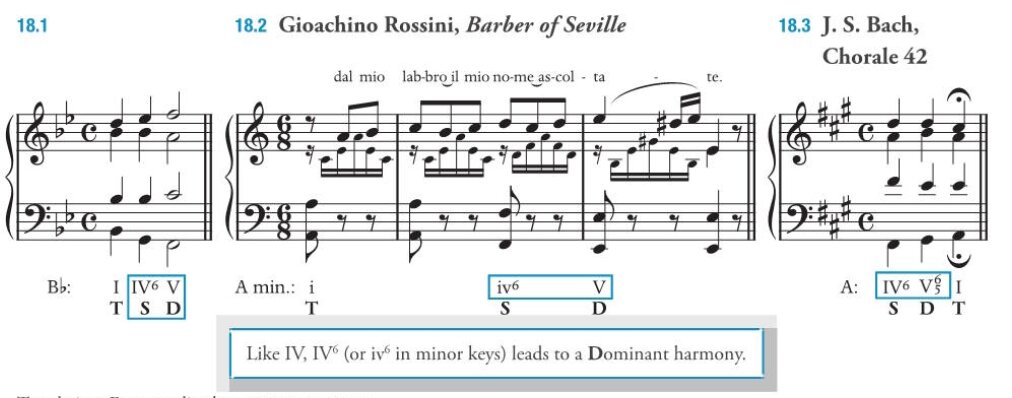
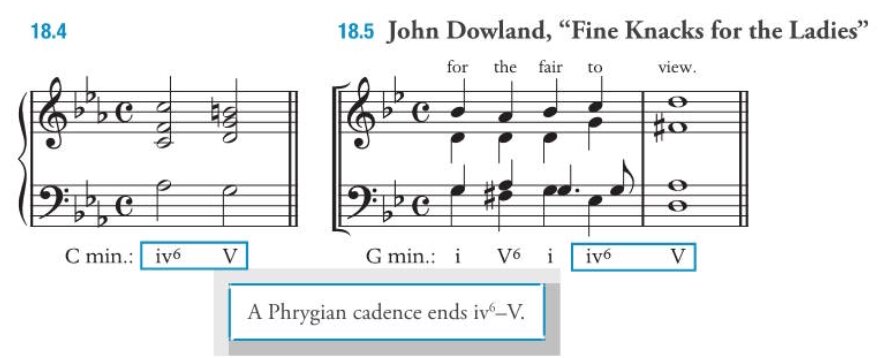
- double any key of $\text{IV}^6$
- should not double the bass of $\text{iv}^6$, because it’s a tendency tone (fa-la-re)
- in minor, if the bass ascend to $\text{V}$, should raise $\hat{6}$ so $\text{iv}^6$ is turned into $\text{IV}^6$, to avoid the augmented second
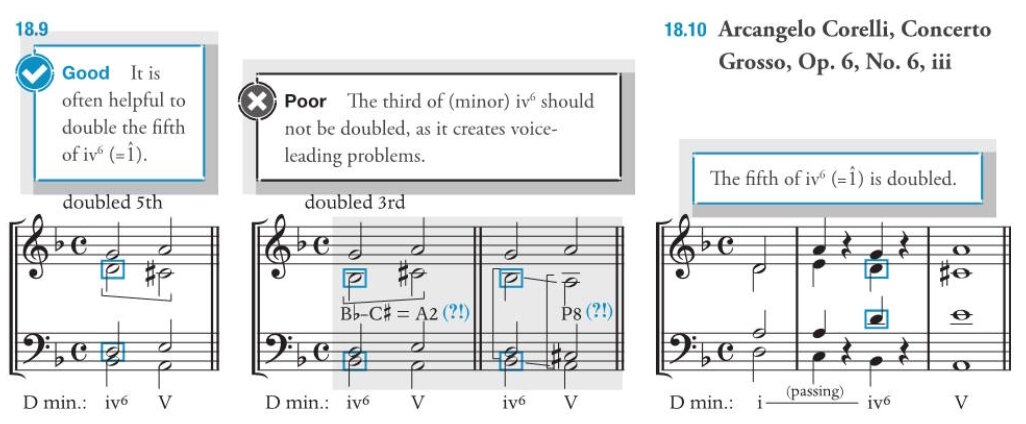
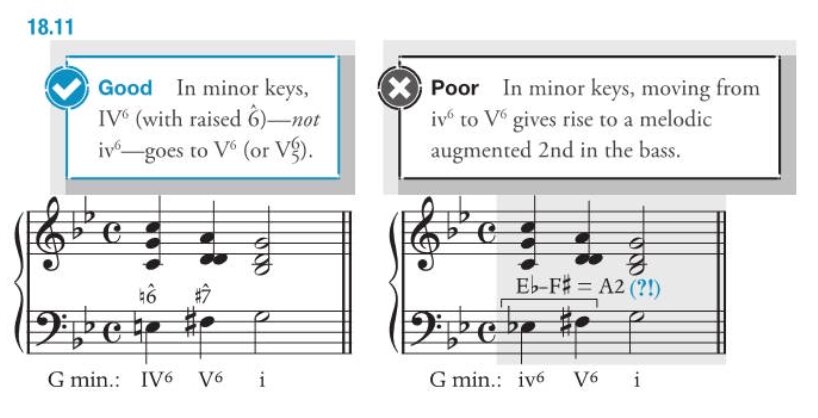
root position $\text{ii}$
- functions as subdominant
- leads to $\text{V}-\text{V}^7$
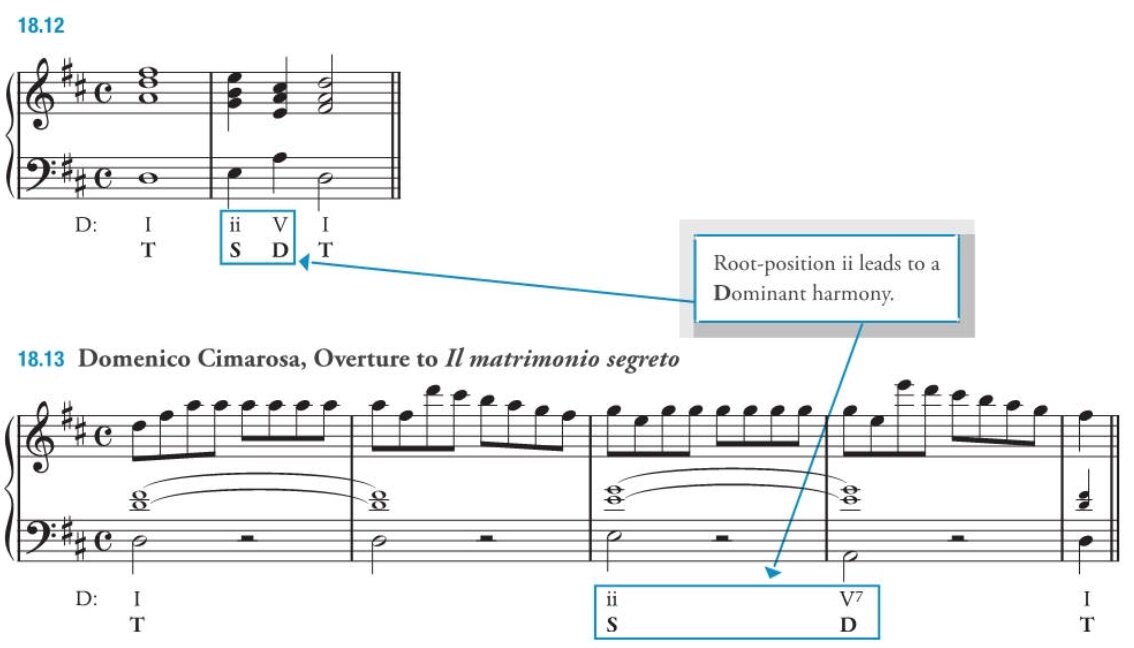
- in minor is diminished
- minor $\text{ii}^{\circ}$ is less used than $\text{ii}^{\circ 6}$

- should double the root
- avoid parallel 5th and 8th in $\text{I}-\text{ii}^{\circ}$; upper voices and bass better in contrary motion

$\text{ii}^7$
- usually in first inversion $\text{ii}_5^6$ (see earlier)
- also in other inversions
- when progressing to $\text{V}$, chordal 7th steps down
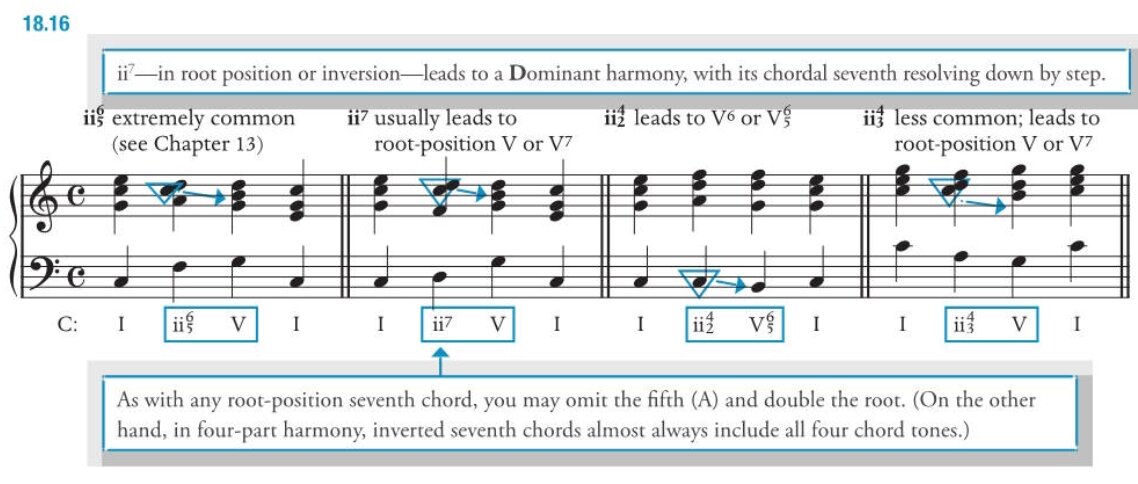

$\text{IV}^7$
- usually in root or 1st inversion
- chordal 7th must step down
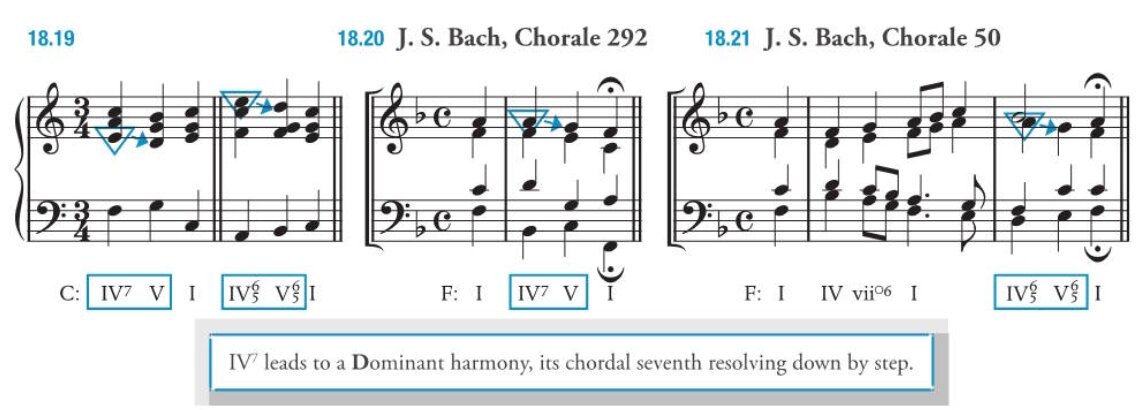
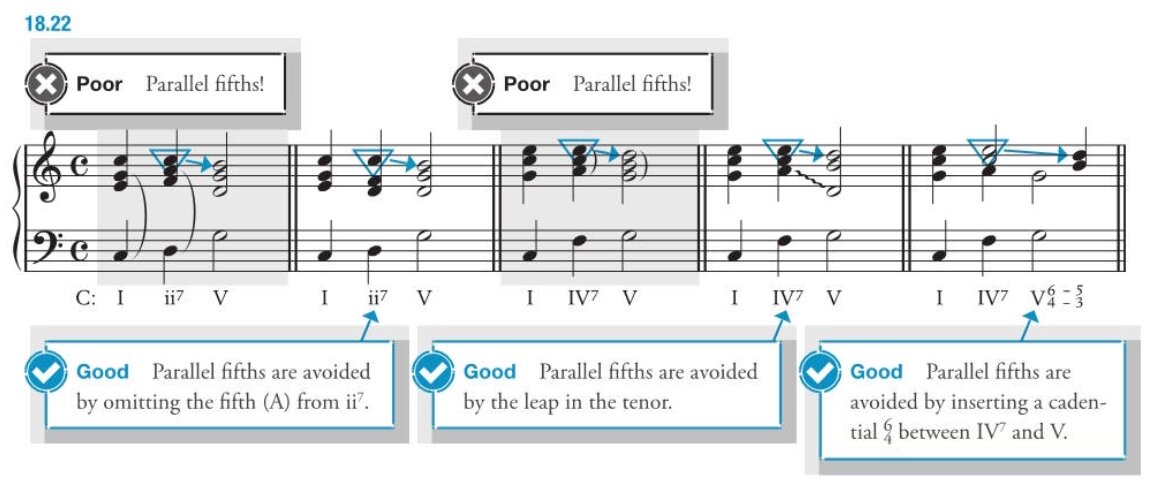
alternating
- $\text{ii}$ and $\text{IV}$ can move between root and first inversion
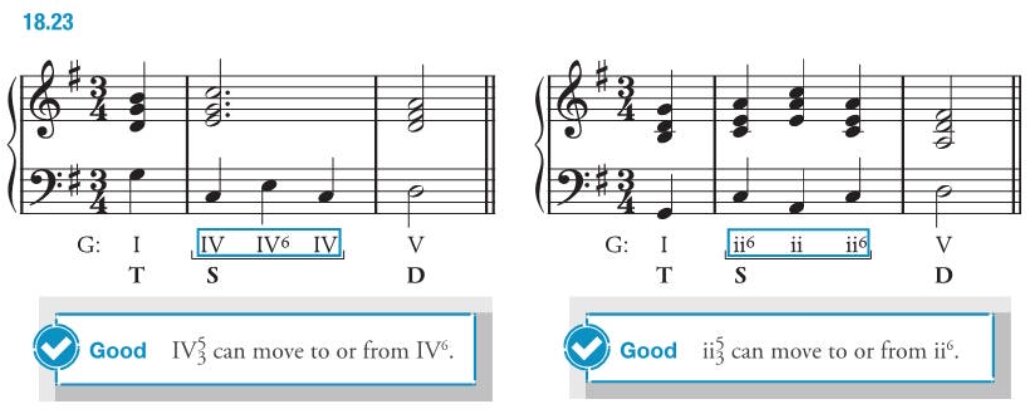
- $\text{IV}-\text{ii}$ is more common than $\text{ii}-\text{IV}$

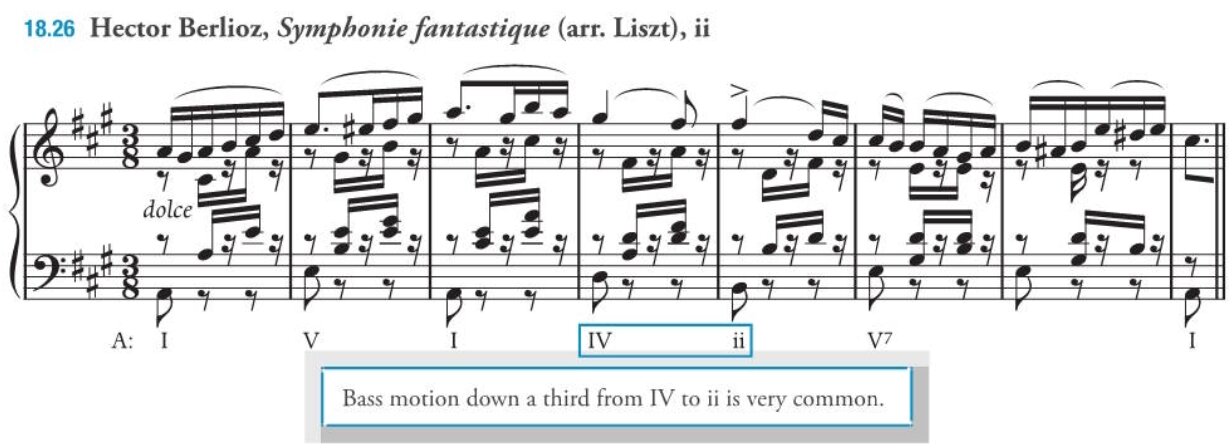
- $\text{ii}/\text{IV}-\text{ii}^7/\text{IV}^7$ ok
- $\text{ii}^7/\text{IV}^7-\text{ii}/\text{IV}$ bad because chordal 7th would not resolve properly
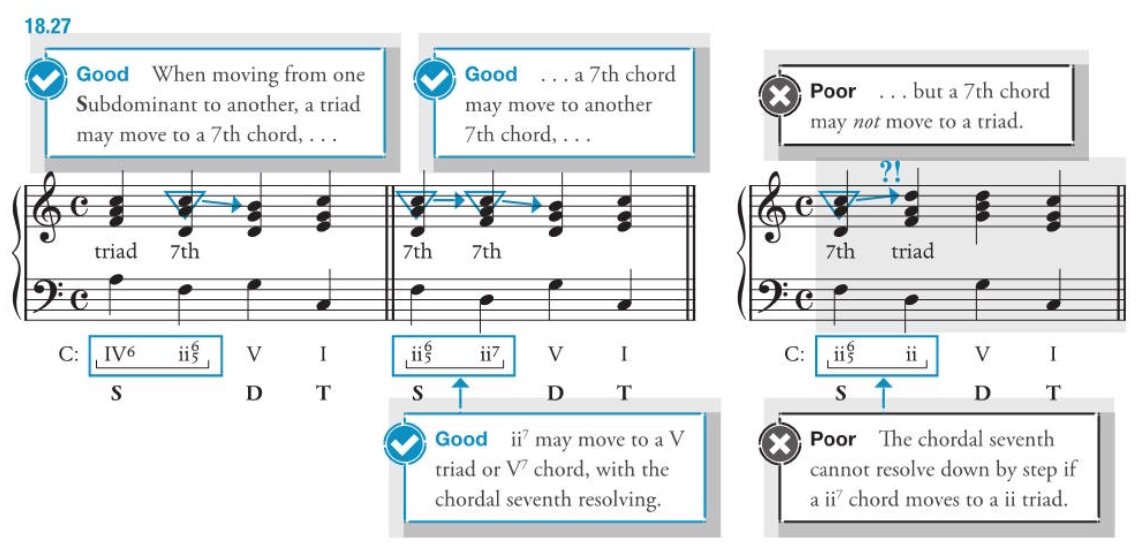
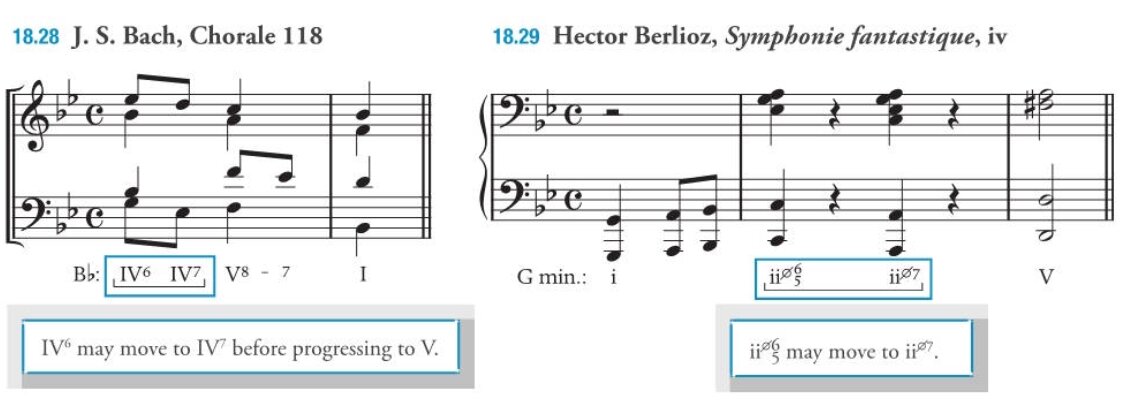
$\text{IV}-\text{I}/\text{I}^6$
- no leading tone in $\text{IV}$
- $\text{IV}-\text{I}$ is less strong than $\text{V}-\text{I}$
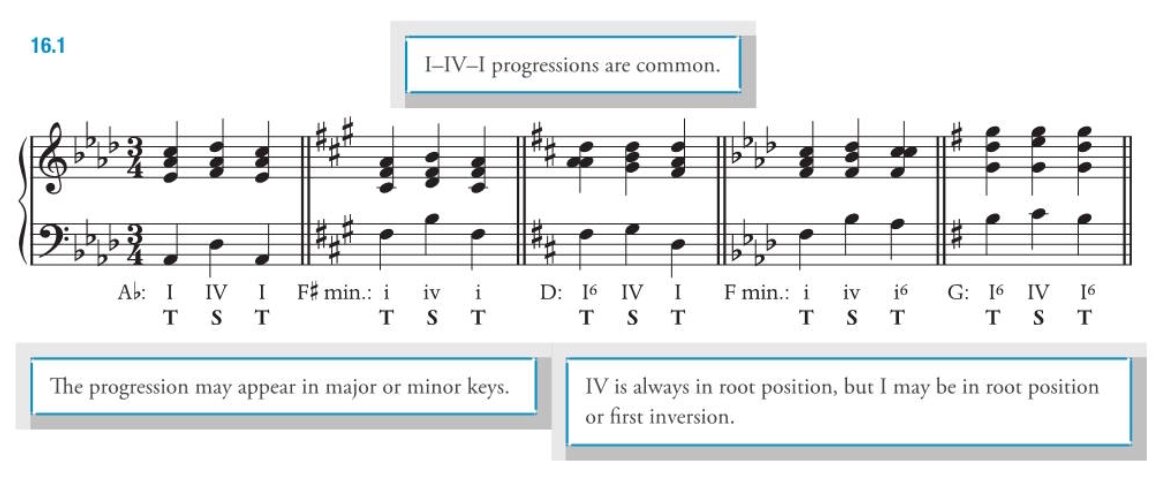
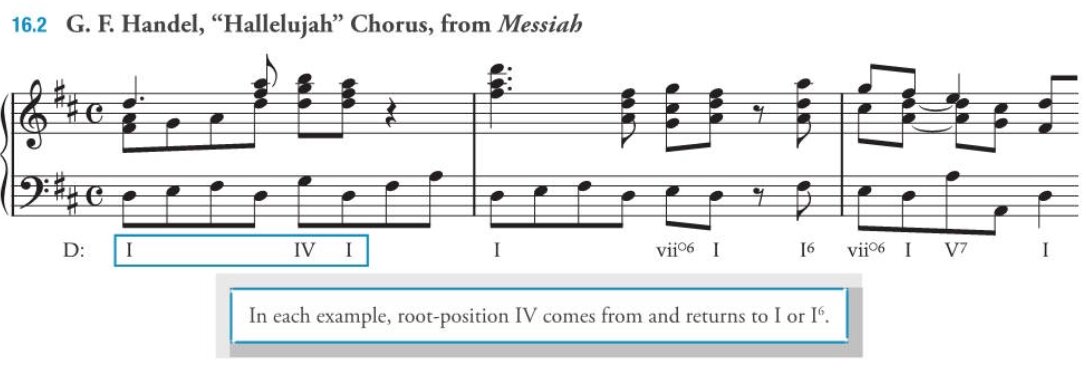

- $\text{IV}$ embellishes $\text{I}$ in $\text{I}-\text{IV}-\text{I}$
- one upper voice sustains on $\hat{1}$
- could be used for melody line 343, 565

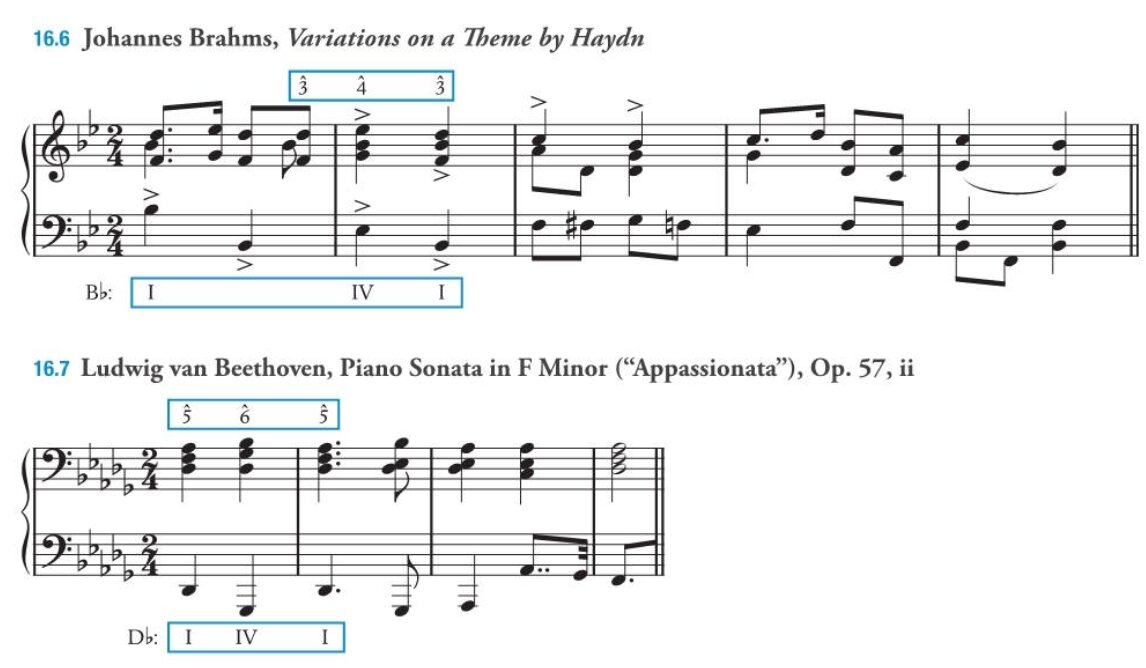
- melody usually stays or step down
- $\text{IV}$ must in root position
- $\text{I}-\text{IV}^6-\text{I}$ is uncommon

plagal cadence
